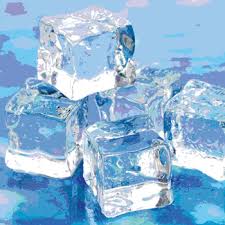Mini Sheet: Nuclear Ice-Breaker "Yamal", 1992 (Russia 2009)
Nuclear Ice-Breaker "Yamal", 1992 (Russia 2009)
18 June (Russia ) within release 50th Anniversary of Russian Nuclear Ice-Breakers goes into circulation Mini Sheet Nuclear Ice-Breaker "Yamal", 1992 face value 72 Russian ruble
| Mini Sheet Nuclear Ice-Breaker "Yamal", 1992 in catalogues | |
|---|---|
| Michel: | Mi:RU 1554Klb |
Mini Sheet is vertical format.
Also in the issue 50th Anniversary of Russian Nuclear Ice-Breakers:
- Stamp - Nuclear Ice-Breaker "Lenin", 1959 face value 7;
- Mini Sheet - Nuclear Ice-Breaker "Lenin", 1959 face value 8*7;
- Stamp - Nuclear Ice-Breaker "Taimyr", 1989 face value 8;
- Mini Sheet - Nuclear Ice-Breaker "Taimyr", 1989 face value 64;
- Stamp - Nuclear Ice-Breaker "Yamal", 1992 face value 9;
- Mini Sheet - Nuclear Ice-Breaker "Yamal", 1992 face value 72;
- Stamp - Nuclear Ice-Breaker "50 Let Pobedy", 2007 face value 10;
- Mini Sheet - Nuclear Ice-Breaker "50 Let Pobedy", 2007 face value 80;
Mini Sheet Nuclear Ice-Breaker "Yamal", 1992 it reflects the thematic directions:
A ship is a large watercraft that travels the world's oceans and other sufficiently deep waterways, carrying passengers or goods, or in support of specialized missions, such as defense, research and fishing. Historically, a "ship" was a sailing vessel with at least three square-rigged masts and a full bowsprit. Ships are generally distinguished from boats, based on size, shape and load capacity.
A flag is a piece of fabric (most often rectangular or quadrilateral) with a distinctive design that is used as a symbol, as a signaling device, or as decoration. The term flag is also used to refer to the graphic design employed, and flags have since evolved into a general tool for rudimentary signalling and identification, especially in environments where communication is similarly challenging (such as the maritime environment where semaphore is used). National flags are patriotic symbols with varied wide-ranging interpretations, often including strong military associations due to their original and ongoing military uses. Flags are also used in messaging, advertising, or for other decorative purposes. The study of flags is known as vexillology, from the Latin word vexillum, meaning flag or banner.
Ice is water that is frozen into a solid state, typically forming at or below temperatures of 0 °C, 32 °F, or 273.15 K. As a naturally occurring crystalline inorganic solid with an ordered structure, ice is considered to be a mineral. Depending on the presence of impurities such as particles of soil or bubbles of air, it can appear transparent or a more or less opaque bluish-white color.
A people is a plurality of persons considered as a whole, as is the case with an ethnic group or nation. Collectively, for example, the contemporary Frisians and Danes are two related Germanic peoples, while various Middle Eastern ethnic groups are often linguistically categorized as Semitic peoples.
An anniversary is the date on which an event took place or an institution was founded in a previous year, and may also refer to the commemoration or celebration of that event. For example, the first event is the initial occurrence or, if planned, the inaugural of the event. One year later would be the first anniversary of that event. The word was first used for Catholic feasts to commemorate saints. Most countries celebrate national anniversaries, typically called national days. These could be the date of independence of the nation or the adoption of a new constitution or form of government. The important dates in a sitting monarch's reign may also be commemorated, an event often referred to as a "Jubilee".





